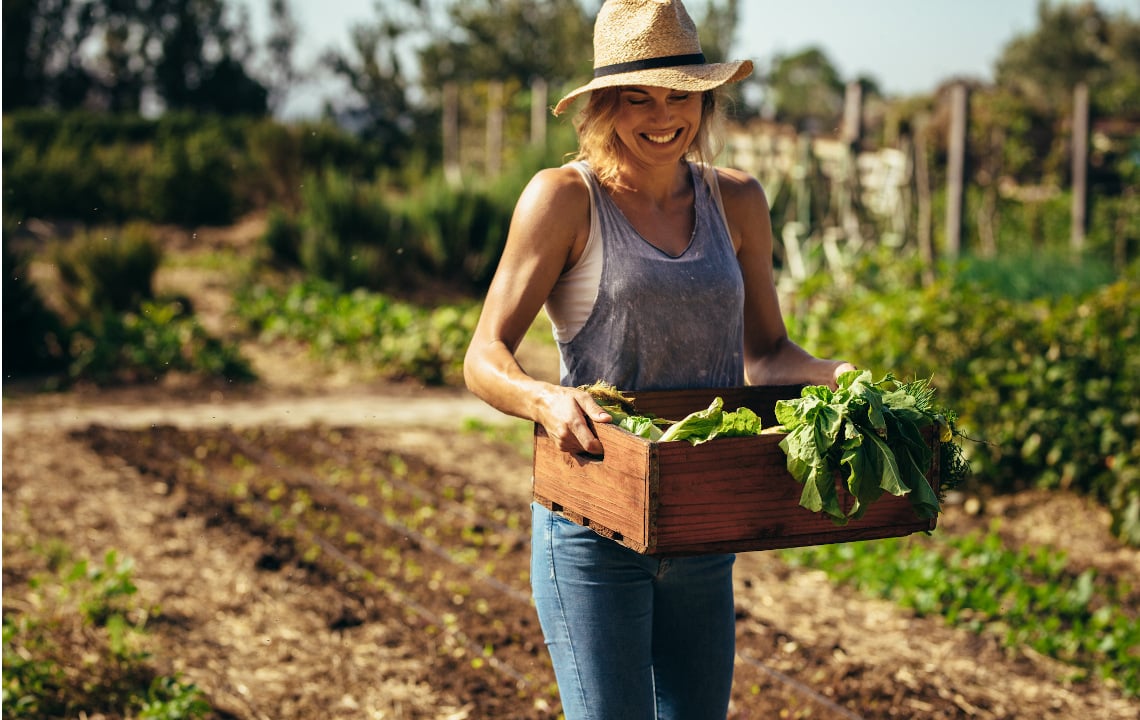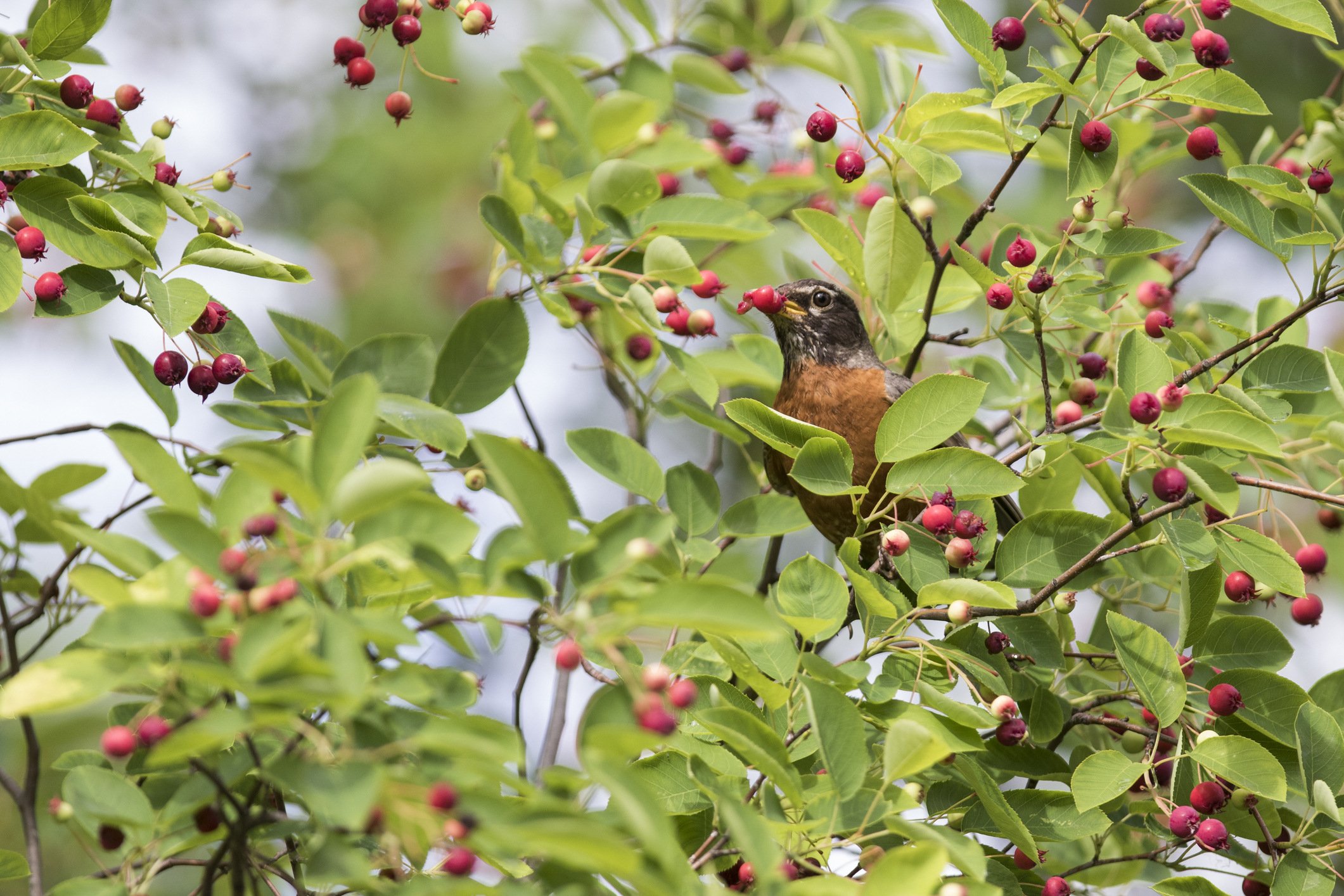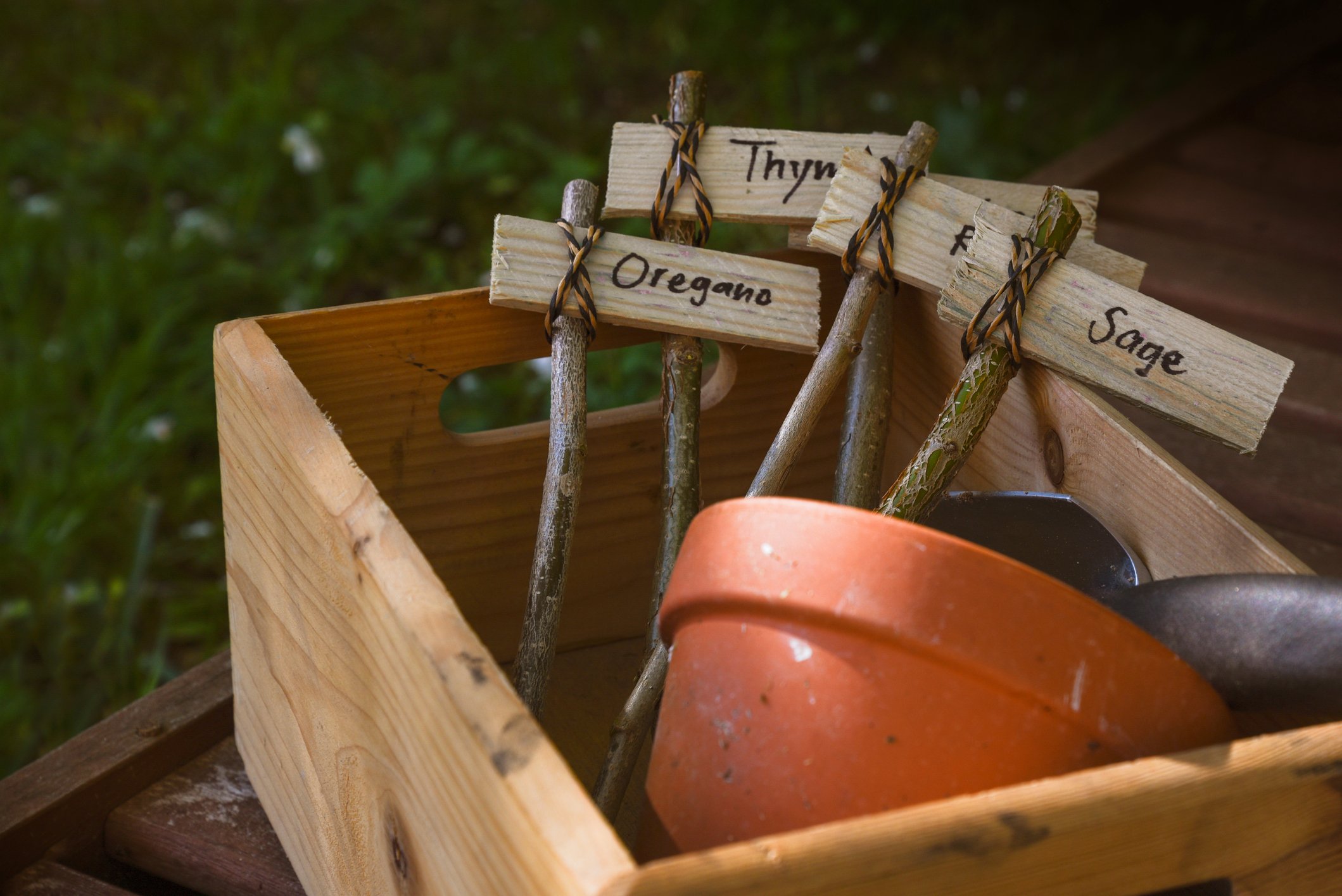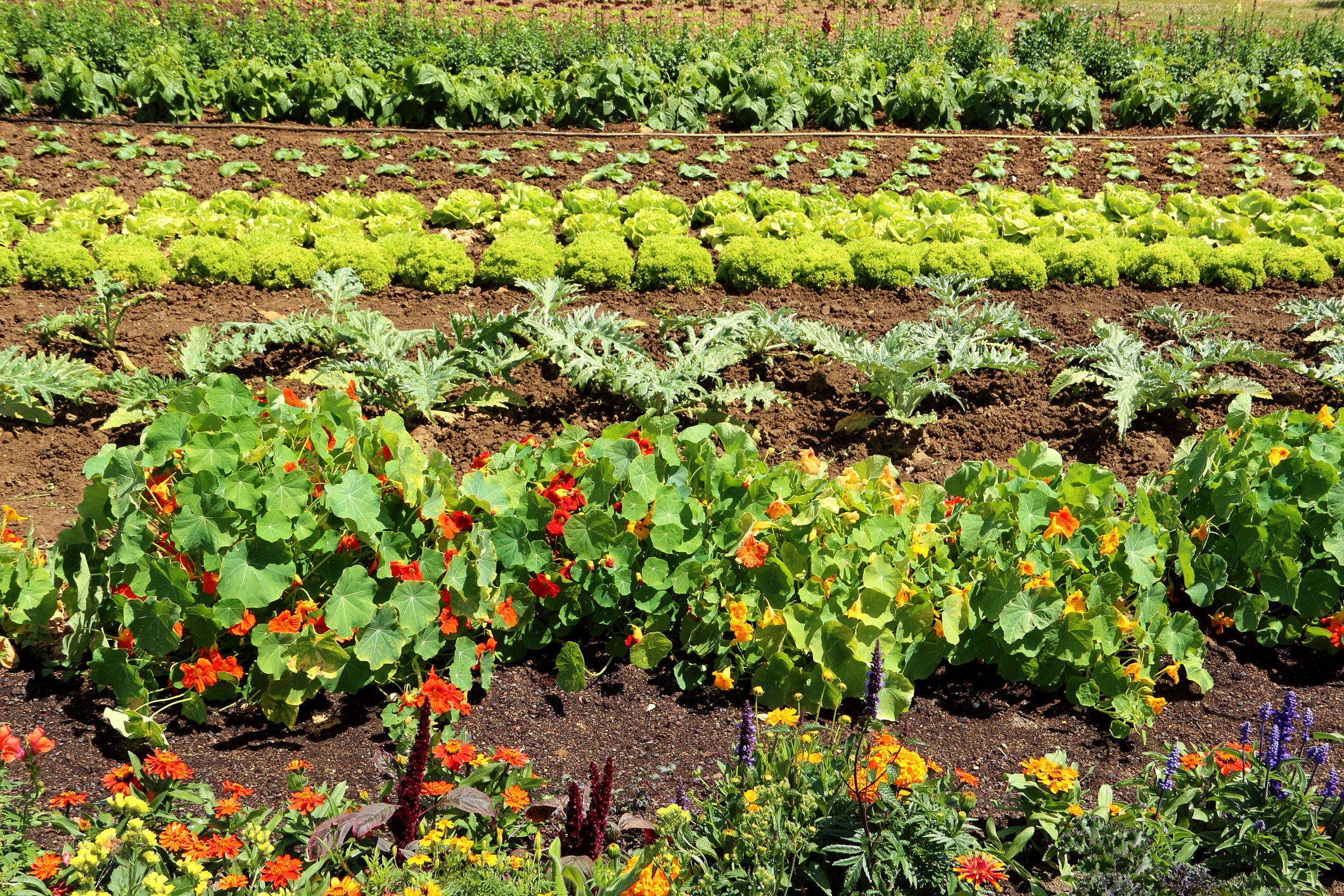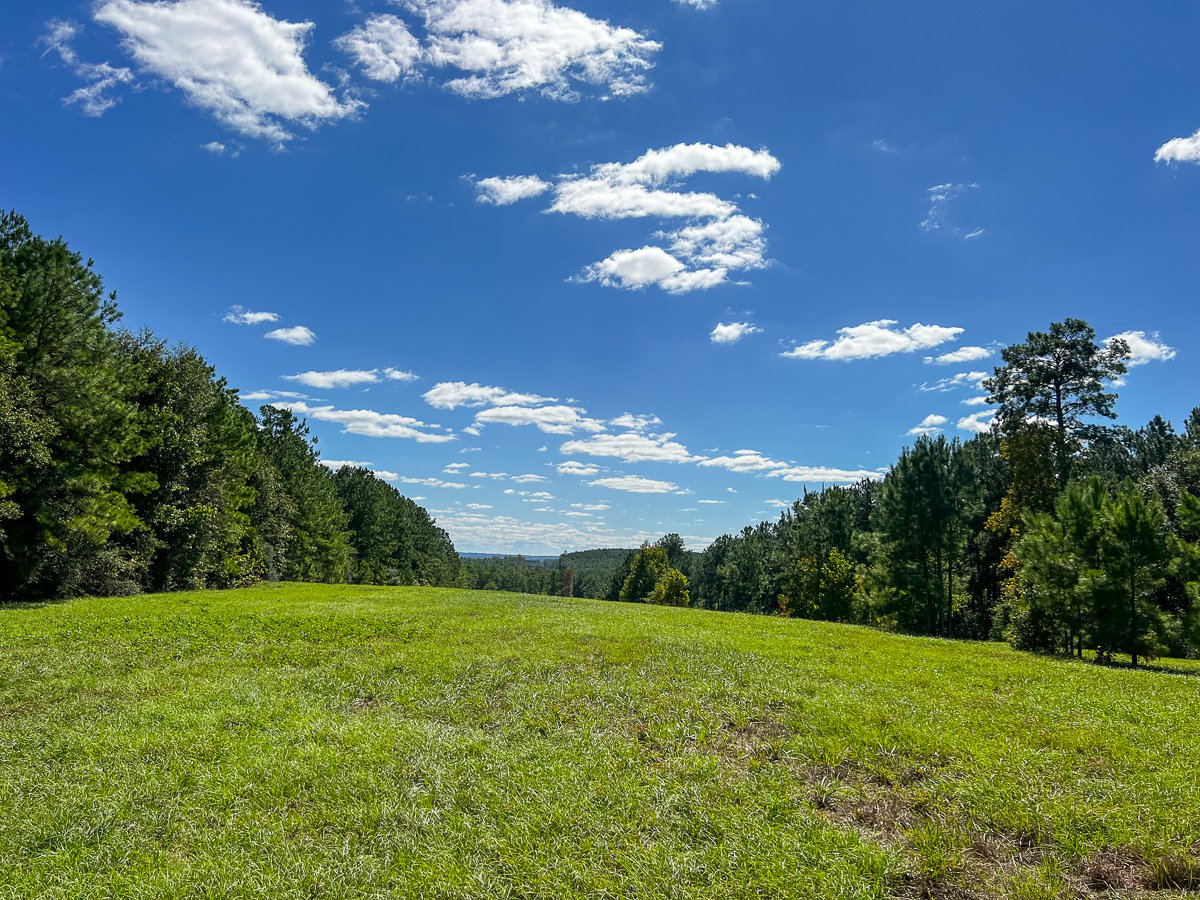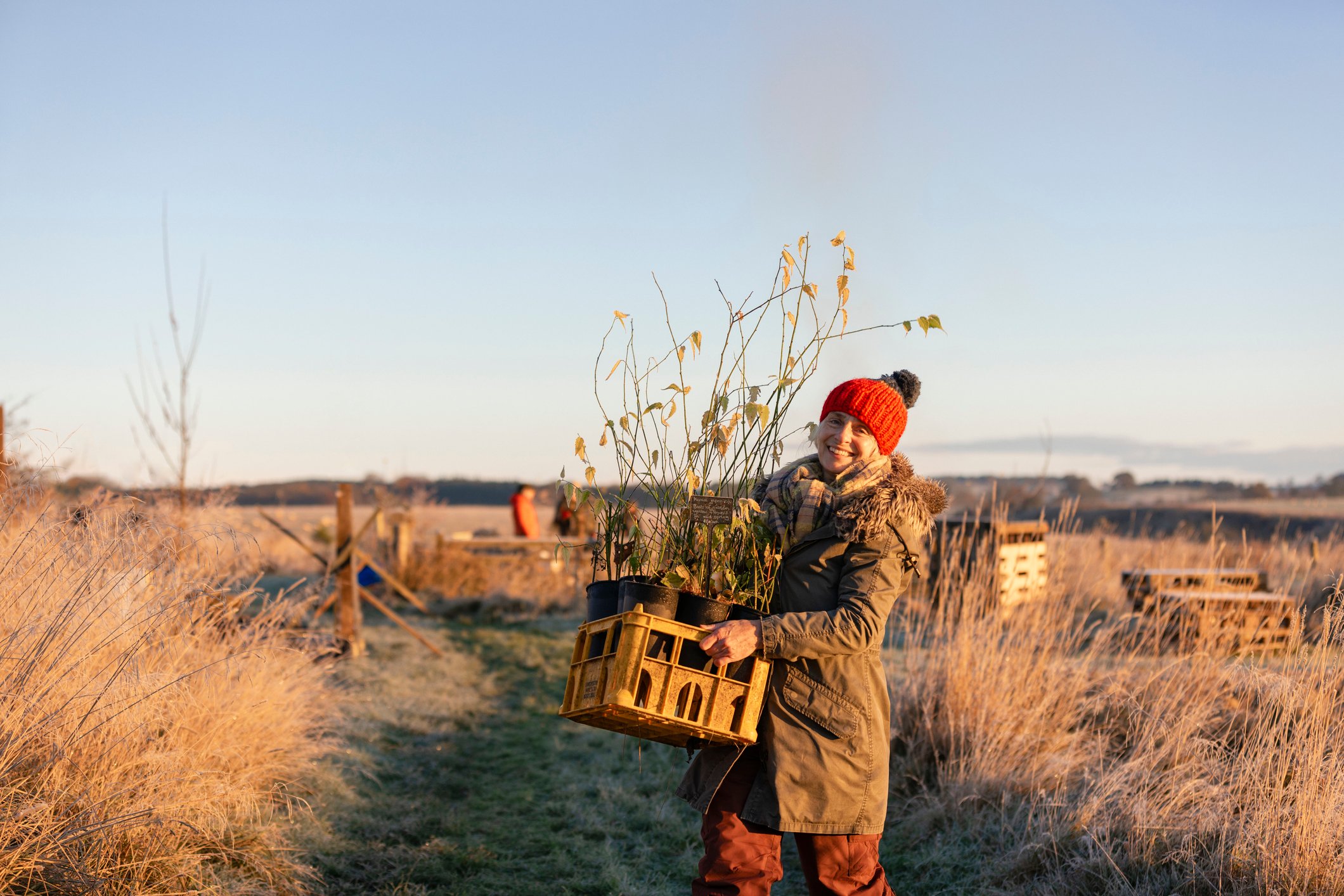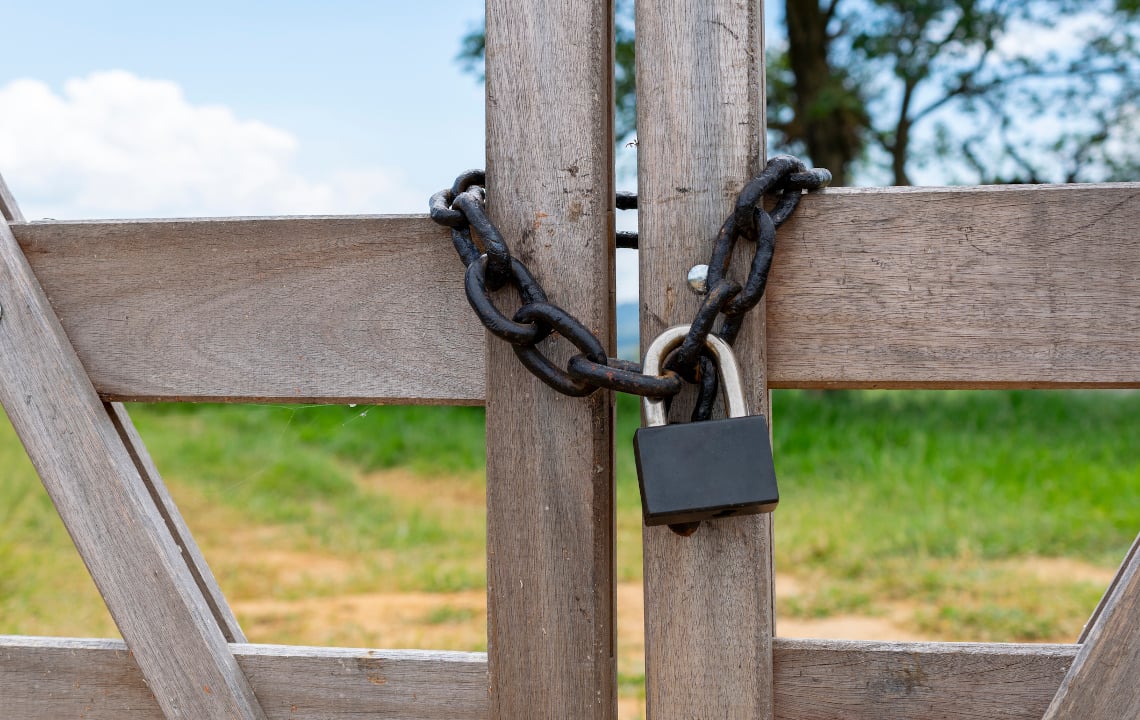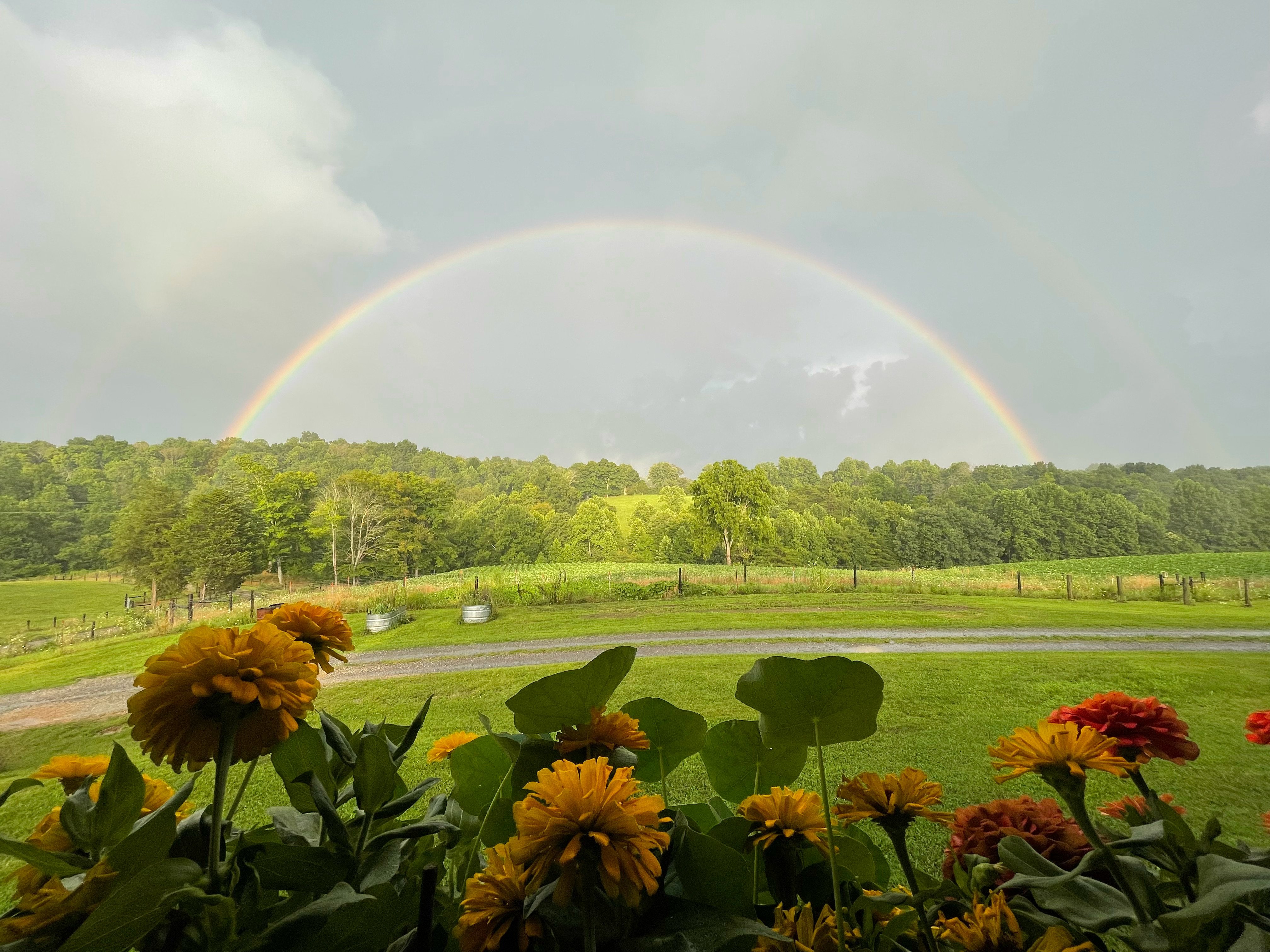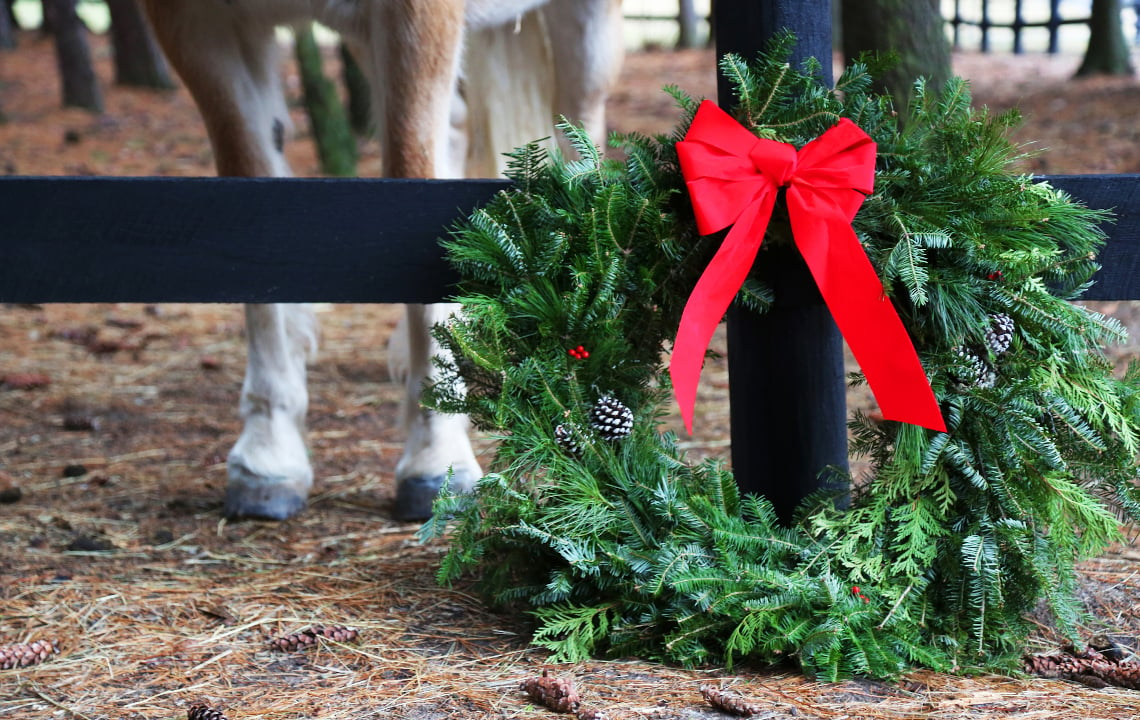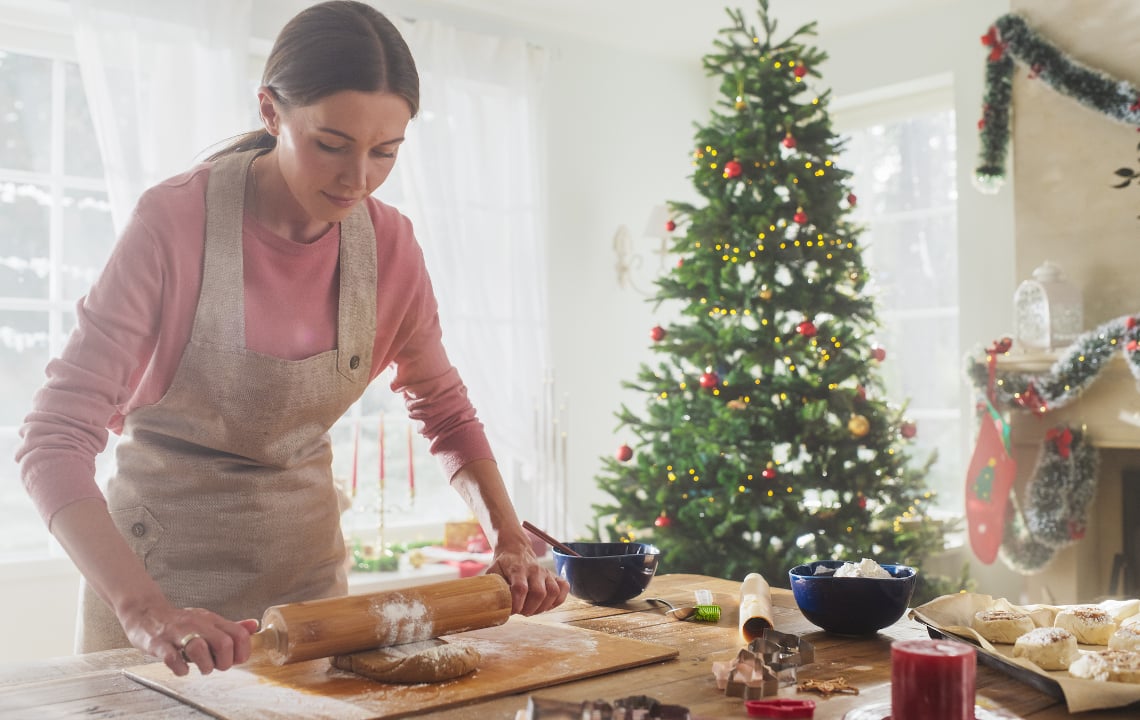Pruning trees and bushes isn’t difficult, but proper tools, timing and technique are essential. L. Woodrow Ross shares his step-by-step tips to help you tackle this cold weather task with confidence.
Pruning is a straight-forward and simple way to keep your perennial bushes, trees and vines healthy and attractive while maintaining the beauty of your landscape.
It all starts with using the properly maintained tools and techniques.
Late fall or early winter are the ideal times for this, as most plants tolerate pruning best when they are dormant.
Some species will tolerate light pruning during the growing season. A good example is "Knock-out" roses, which can become huge in one growing season and can tolerate being cut back. Some blooms will be sacrificed, but they recover quickly to bloom throughout the remainder of the season. But most should only be pruned when dormant.
Pruning Tool Selection
There are some basic tools required for pruning, and some larger plants require specialized equipment. Here is a list of tools that might be needed for a wide range of pruning projects:
- Handheld pruning shears --- recommended to use "scissor" type, as "anvil" type can cause damage)
- Lopping shears --- long handles provide more leverage for cutting larger limbs
- Extension pole loppers/saw combination
- Small, curved pruning saw
- Bow saw
- Chain saw
- Hedge shears
- Electric hedge shears
- Ladder
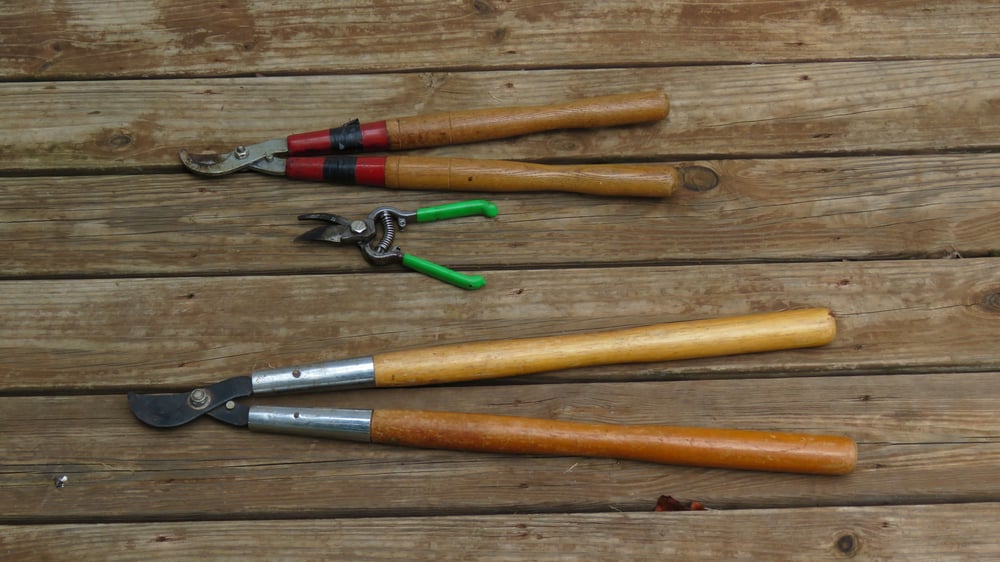
With this arsenal of tools, you will be equipped to tackle most pruning jobs you may encounter.
The lighter hand tools will handle the smaller jobs, but major pruning of large tree limbs may require the use of pruning saws or even a chainsaw. Also, pruning of major tree limbs may require the use of a ladder.
Techniques for Use of Pruning Tools
When using pruning shears of the "scissor" type, always cut limbs with the thin cutting blade near the main stem or trunk of the tree or bush. This will result in a clean, close cut.
When the limb is larger than 1/2" in diameter, it may require the use of lopping shears. These may be the "scissor" type or the "anvil" type. The scissor type usually provides a cleaner cut, as the anvil type may crush the bark causing a wound that will take longer to heal.
When cutting elevated limbs that are not too large in diameter, it may be feasible to use an extension pole saw or lopper, or a combination of both. The lopper will normally cut limbs up to 1/12" in diameter, and the saw will cut even larger limbs, but care should be taken on the larger limbs to avoid tearing of the bark from the trunk below the cut.
safety first!
Always be aware of any electrical lines in the area and if pruning near them, it is advisable to use only wood or fiberglass poles for best safety. In addition, when cutting overhead, use eye protection to avoid injury from falling dust and debris.
dos and don't when cutting larger limbs
When cutting large, heavy limbs, a cut should first be made on the underside of the limb, a few inches from the trunk. The second cut should be on top of the limb, a little farther from the trunk. This will avoid the limb splitting and peeling bark from the trunk of the tree.
After the limb is removed, the stub can be properly cut flush with the trunk to facilitate swift healing of the area.
Major branches of a tree will have a natural collar where the branch originates from the trunk. Limbs should be pruned back to the collar.
Do not cut into the trunk of the tree. Also, do not leave a stub protruding. This stub will die, and decay can damage the tree trunk.
Tips for Pruning Targeted Species
Pruning methods vary widely, depending on the target species. There are different requirement for roses as opposed to grapes, but there are some basic guidelines in pruning small shrubs or vines.
It is advisable to make cuts on small branches on a slant, about 1/4" above a bud. If the distance exceeds this recommendation, the stub will die. If the cut is closer to the bud, the bud will die.
Always remember that when pruning at a bud, the new growth will grow in the direction that the bud is facing. This is not as important on some species, but in the case of peaches, for example, it is very important. By pruning with buds facing outward, the peach trees can be kept open, allowing sunlight to penetrate for healthy fruit.
Which brings us to our next section...
pruning Fruit Trees
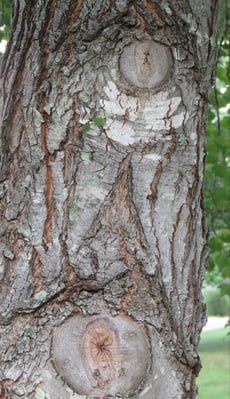 peacH TREES
peacH TREES
Peach trees should be pruned in a vase shape (flat on top, open in center). This allows light to get into the center of the tree. Young trees should be lightly pruned to maintain strength and vigor. As the trees mature, they will tolerate more vigorous pruning, but the open, flat top should be maintained.
apple trees
Apple trees may be cut using the vase method when they are young, but the central leader method thereafter will provide a stronger
tree that will bear heavy fruit weight and turbulent weather better.
The central leader method means that a dominant center branch will be allowed to remain and the tree will have a pyramid shape.
Due to the size of mature apple trees, many homeowners plant semi-dwarf or dwarf trees to suit more limited spaces. These trees may be more adapted to modified central leader pruning, where the trees are more open than the central leader system used for standard sized trees.
Shrubs and Vines
Pruning of shrubs and vines varies significantly depending on growing characteristics of the plant.
Some species are free standing, but others may require a trellis or must be supported by posts and wire. Many books on pruning depict a four-wire system for grapes and others have different recommendations. I use a three-wire system, but that is a personal preference.
grapes
Grapes are unique and are among the varieties that require support on wire.
One method for grapes is the spur method (one wire).
- The first winter, the vines should be cut back to three buds and will not need support.
- In the second winter, cut the main stem back at a bud, just above the top wire. Leave a lateral branch on each side and cut the smaller branches on the lateral back to one bud per spur.
- In the third winter, do the same, except leave two buds per spur.
- From the fourth winter on, leave two buds on the strongest cane on each spur.
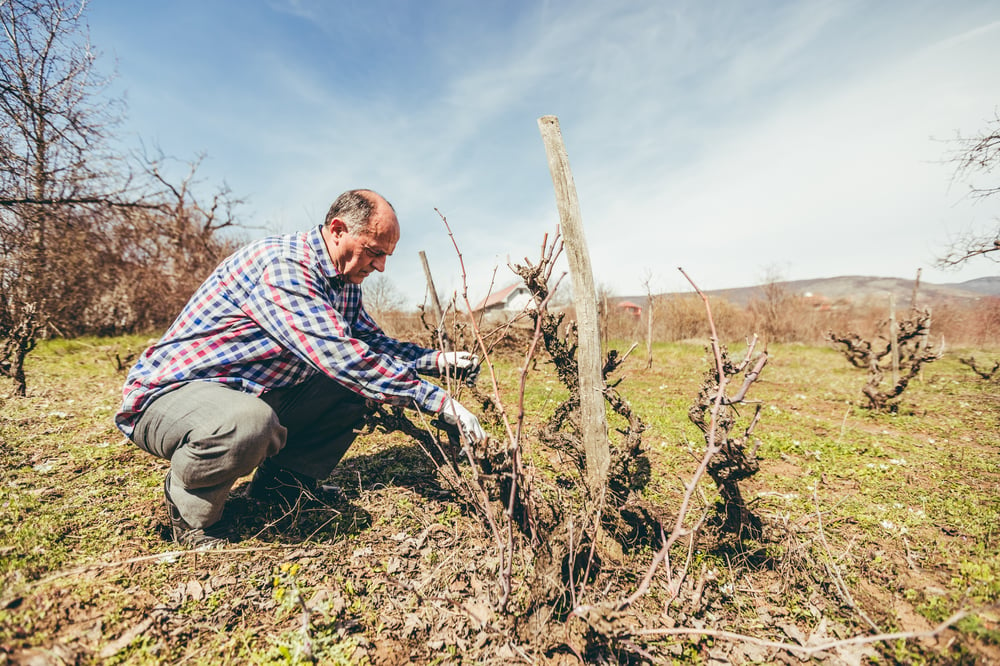
The cane method of pruning grapes requires multiple wires (I use three, some use four).
- In the second winter, cut through a bud just above top wire. Leave a lateral shoot for each wire (on both sides of main vine). Leave two buds on each of the shoots.
- In the third winter, leave two new shoots on the original lateral shoot. Leave 10 buds on each of the new shoots and two buds on four short spurs on the original lateral shoot.
- In the fourth winter and thereafter, the original lateral shoot should be left with four new shoots having 10 buds each and two buds on the four spurs left at the junction of the original lateral shoot and the newer canes.
Blueberries
Blueberries require minimal attention and pruning is restricted to the removal of any dead or excessively bushy growth. Canes that are over three years may be removed.
A good indicator of the need for pruning blueberries is the size of the berries. If they have become much smaller, it is an indication that they need pruning or they are not getting the proper nutrients.
One requirement for blueberries is that during the height of fruit maturity, you may need to provide netting to protect the crop from birds. This is true of most of the berry family, as birds are attracted to them when they begin to change color.
final thoughts on pruning trees, shrubs and vines in the south
In our region of upstate South Carolina, late December through early February is an optimal time for pruning. It is a pleasant activity, as the weather is moderate and with the thinning of the foliage, it is easy to see where your attention needs to be directed.
It is best not to procrastinate in pruning because of the possibility of a warm spring and early emergence of new growth.
Pruning is well worth the effort as it will protect your trees, shrubs and vines from being prone to storm damage by making them stronger. Plus, regular pruning makes plants more attractive and fruit trees and vines more fruitful, which enhances the appearance and value of our homes.


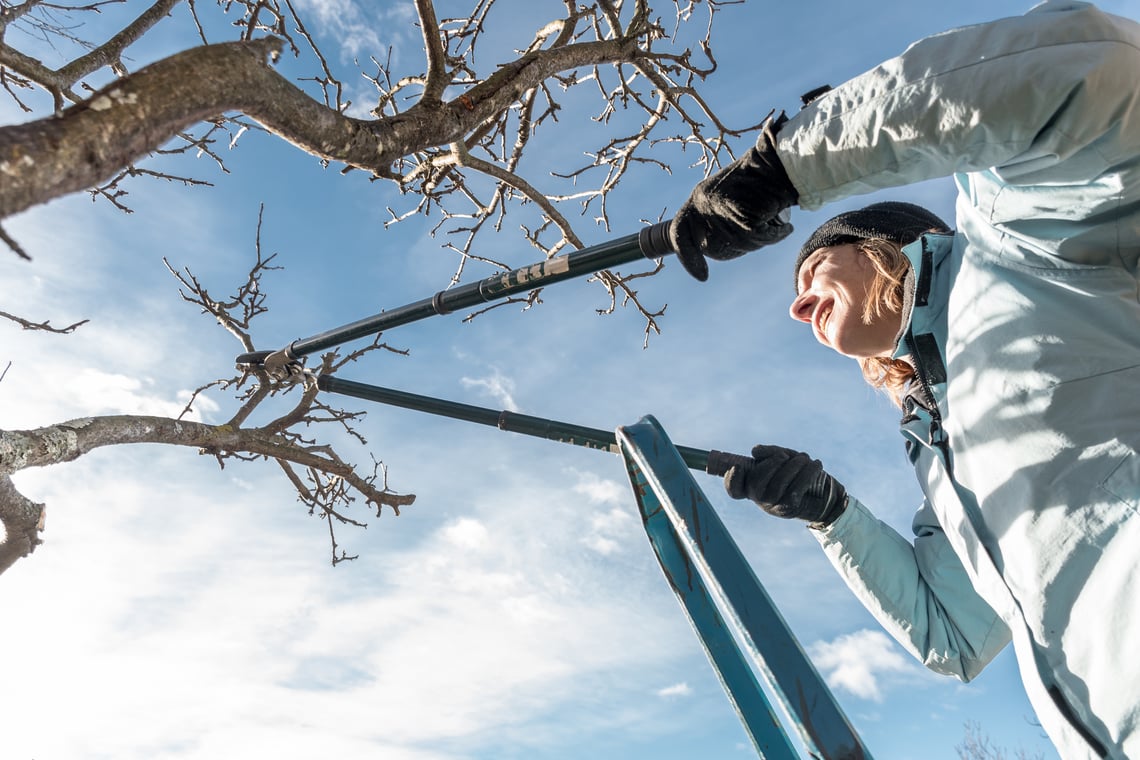

.jpg)









